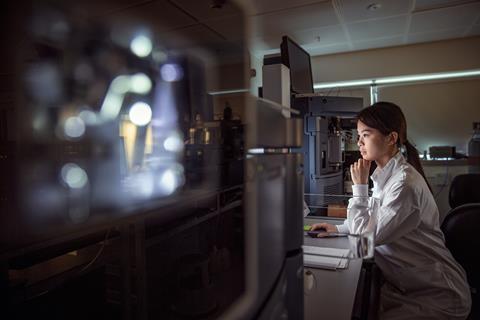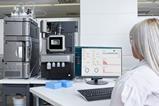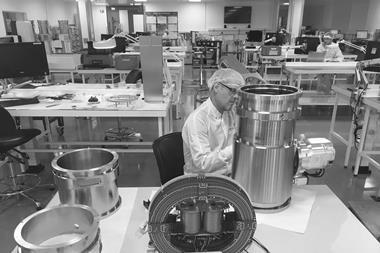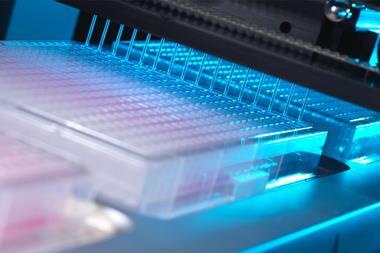Ion mobility spectrometry is transforming the field of biomolecule research, with Waters technology at the forefront of this vital analytical innovation
After extensive R&D, an exciting anti-inflammatory drug progresses directly through drug development promising to put an end to arthritis. The clinical trial is set to commence when suddenly, confirmatory experiments suggest a fatal flaw – a by-product of drug metabolism may result in cardiac arrest.
These occurrences are all too common in pharma, dashing the hopes of researchers at a late stage and after billions of dollars have been sunk into development. To combat this issue, it is vital that robust analytical procedures are in place to provide researchers with reliable and reproducible data at each stage of development.
Ion mobility spectrometry (IMS) supplies precisely this, and can be leveraged in clinical research to both facilitate discoveries and prevent unpleasant surprises later in development. Since the advent of the first commercial instrument, IMS has been adopted by researchers in pharma labs around the globe.1 Its popularity continues to grow and it’s easy to see why. From characterising drug candidates to identifying key biomarkers and disease pathways, IMS has emerged as a versatile tool that ensures scientists see everything in their samples.
How does it work?
Put simply, IMS is an analytical technique that separates ions on the basis of their size, shape, charge and mass. It can be employed as a standalone technique, but it is especially powerful when coupled with mass spectrometry (MS). In this case, it lends an additional dimension of resolution to mass analysis by facilitating separation of similar species in the gas phase. This combined IMS–MS technology is used to accurately identify and quantify analytes. As IMS separation occurs on the millisecond timescale, the technique can be nested between chromatographic separation and time-of-flight (TOF) MS analysis.
IMS–MS instrumentation is increasingly common in industry, where robust analytical techniques that operate at high data acquisition speeds are critical
Other separation techniques – such as liquid and gas chromatography – are frequently coupled with IMS. This means IMS can be used to reduce analysis times by enabling the use of shorter chromatographic separations due to the added dimension of resolution. Reducing analysis times can help to prevent the development of bottlenecks in analytics.

IMS also provides an additional, highly robust molecular parameter in the form of the collisional cross section (CCS). As CCS is used as an additional molecular identifier, it is useful for clarifying and corroborating research findings. Finally, and perhaps most importantly for pharma research, IMS cleans up spectral noise by effectively distinguishing background interference from real signal. This can greatly simplify the analysis of complex mixtures.
These features have the combined effect of increasing confidence in results, which removes the need for time-consuming confirmatory experiments.2 As a result, combined IMS–MS instrumentation is increasingly common in industry, where robust analytical techniques that operate at high data acquisition speeds are critical. The technology has been used in studies across the drug discovery and development pipeline. And with the latest technological innovations, its use is only expected to increase in the coming years as it helps a growing number of drug candidates reach the marketplace.
Identifying metabolites
Drug metabolism can significantly impact toxicity or therapeutic effect.7 As a result, it is vital that reliable and reproducible data is collected to properly characterise metabolites at each stage of development. By failing to detect a lethal by-product of metabolism at an early stage, valuable time and resources can be wasted.
As a result, IMS–MS is an increasingly popular technique for resolving and tracking metabolite structure. A striking example used travelling wave IMS–MS to measure and track CCS data for metabolites during drug development. As these values are independent of matrix, chromatographic conditions or ion concentration, it served as a reliable experimental parameter that remained consistent across a range of experimental conditions. The reliability and reproducibility of the data further ensured consistency across labs running experiments in different geographic locations, and at different stages of development. This enabled researchers to run their analyses in a variety of locations according to their workflow needs.
The reliability of the data obtained with IMS–MS technology allowed the drug to obtain regulatory approval more rapidly
The confidence in metabolite assignment facilitated by IMS makes it clear which metabolites need to be characterised further before progression. The reliability of the data obtained with IMS–MS technology allowed the drug to obtain regulatory approval more rapidly. This resulted in lower costs and accelerated drug development, to help improve patients’ lives sooner.
Advancing biomedical protein studies
IMS–MS has emerged as a powerful technology for studying large biomolecules – including lipids, proteins and carbohydrates. Protein studies in particular have benefited from IMS, which helps to elucidate the identity, structure, dynamics and conformation of many proteins associated with disease. These include disease biomarkers, antibodies, protein misfolding and protein–ligand interactions.1-3 The technology has even been used to fully characterise virus structure in the gas phase, including two structural forms of hepatitis B capsids.4

In 2011, a ground-breaking study leveraged IMS–MS technology to solve an analytical problem that was holding back research into the cause of Alzheimer’s. Numerous studies suggest that, although benign in its monomeric form, amyloid β protein aggregates or oligomers are strongly linked to the onset of Alzheimer’s, causing synaptic malfunction and neuronal injury. The challenge was to find a method that would distinguish between similar oligomers in solution. This was a crucial step in accurately defining the oligomeric species that forms along the pathway to the neurotoxic oligomer. While conventional techniques were able to retrieve information for dominant structures within the population, those existing as a small fraction of the total mixture would be averaged out or heavily overlapped.1,5
IMS–MS provided an ideal solution to the problem, identifying key structures formed along the amyloid β protein self-assembly pathway that were not detected using conventional techniques.1,6 With 5.8 million US citizens suffering from Alzheimer’s as of 2019, a figure predicted to rise with our global ageing population, research to determine its cause is more important than ever.6 IMS–MS has opened up new research possibilities in developing future treatments for Alzheimer’s and similar diseases.
Future outlook
In a fast-changing industry, IMS–MS technologies continue to evolve. In response to the need for analytical techniques that easily fit into workflows, IMS–MS instruments with streamlined software, automatic set-up and built-in checks have been developed. This promises to extend the reach of the technology into the hands of scientists who require greater usability for routine applications, and may enable faster metabolite identification, boost lab productivity and help accelerate the development of drugs.
IMS–MS is pushing the boundaries of technology for both research and routine applications
Ion mobility technologies enabling advanced mobility experiments can also be used to effectively ‘zoom in’ on interesting parts of the spectra, which enables detailed analysis of conformational changes and opens up exciting new research possibilities in protein dynamics and drug binding.
A powerful analytical technology for pharma analysis, IMS–MS applications range from elucidating the cause of disease to accelerating drugs to market. Its provision of reliable data ensures there are no surprises for researchers striving to meet regulatory requirements. The high-throughput capability of IMS-MS further helps to boost lab productivity, with innovations in the equipment pushing the boundaries of the technology for both research and routine applications. As the technique continues to grow in popularity, this much is clear: IMS has rightly earned its place in the future of pharma analysis.
Debbie Francis is principal product marketing manager at Waters Corporation
References
1. I D Capuzano and J L Lippens,Curr. Opin. Chem. Biol., 2018, 42, 147 (DOI: 10.1016/j.cbpa.2017.11.008)
2. A Kiss and R M A Heeren,Anal. Bioanal. Chem., 2011, 399, 2623 (DOI: 10.1007/s00216-010-4644-1)
3. L Liu et al,J. Am. Chem. Soc., 2009, 131, 15980 (DOI: 10.1021/ja9060454)
4. C Uetrecht et al,Angew. Chem., Int. Ed., 2008, 47, 6247(DOI: 10.1002/anie.200802410)
5. M Kłoniecki et al,J. Mol. Biol., 2011, 407, 110 (DOI: 10.1016/j.jmb.2011.01.012)
6. Alzheimer’s Association: Alzheimer’s Disease Facts and Figures 2019http://bit.ly/357QQYq
7. R Gasser,Nato ASI Series, 1999, 303, 183 (DOI: 10.1007/978-1-4615-4855-3)


















No comments yet